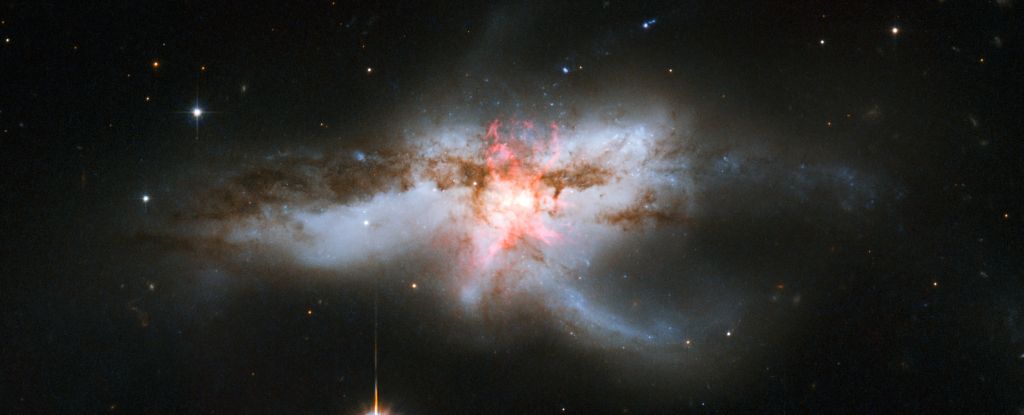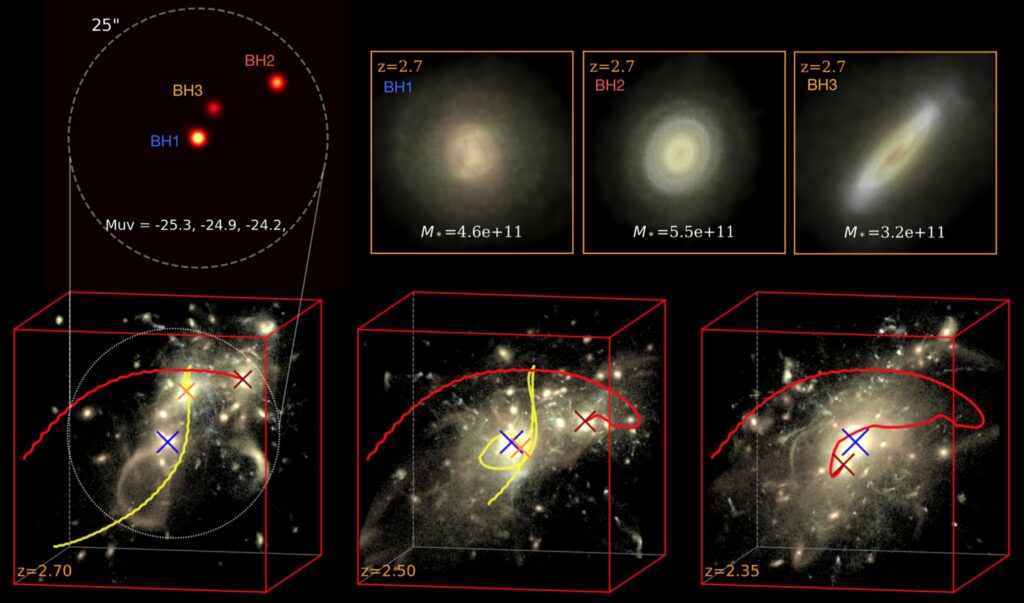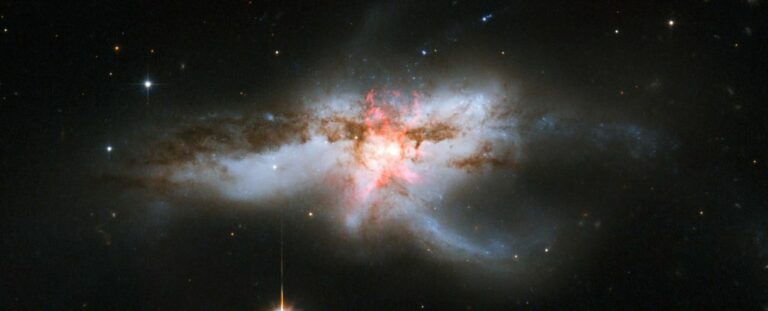A Rare Triple Merger Could Result in the Formation of Black Holes So Massive They Shouldn’t Exist
Supermassive black holes, which can be millions to billions of times the mass of the Sun, are among the most massive objects in the Universe, and their evolution poses a significant challenge to explain. However, the evolution of ultramassive black holes, which have masses exceeding 10 billion Suns, is even more challenging to explain, particularly in the early Universe. Despite this challenge, ultramassive black holes have been observed and are not just theoretical. For example, the galaxy J2157, which existed around 12.3 billion years ago, contained a black hole with a mass of 34 billion solar masses, while the galaxy S5 0014+81, which existed around 12.1 billion years ago, contained a chonker black hole weighing 40 billion solar masses.

Explaining the evolution of supermassive black holes in the Universe, especially those with ultramassive masses over 10 billion times that of the Sun, has been a challenging task. If these black holes had just grown from feeding on matter around them, they would not have had sufficient time to attain such massive sizes when the Universe was less than 10 percent of its current age. However, the existence of such ultramassive black holes has been observed, and a recent simulation offers an explanation for their formation without violating current cosmological models.
Astrophysicist Yueying Ni from the Harvard-Smithsonian Center for Astrophysics (CfA) explains that an extreme merger of massive galaxies during the ‘cosmic noon’ epoch could be a possible formation channel for ultra-massive black holes. Besides, black holes can also gain mass through collisions with other black holes, a phenomenon that we have observed in recent times. During such mergers, a small percentage of mass is converted into gravitational energy, resulting in a black hole just short of the combined mass of the pre-merger objects.
To understand the formation of ultramassive black holes in the early Universe, the researchers, led by Ni, used a custom-made software tool called Astrid. This software was specifically developed to analyze the evolution of the Universe, including the formation of galaxies and the merging of supermassive black holes. The researchers ran Astrid on a supercomputer named Frontera, located at the Texas Advanced Computing Center. The use of a supercomputer was necessary due to the need for a large observational space to study outliers such as ultramassive black holes, which requires a significant amount of computational power. However, the investment in this approach paid off, as the researchers were able to observe black holes forming around 10 billion solar masses by approximately 10 billion years ago.

Astrophysicist Yueying Ni and her team used the software Astrid to investigate the formation of ultramassive black holes in the early Universe. The software was run on a supercomputer called Frontera to model the evolution of the Universe, including the formation of galaxies and the merging of supermassive black holes. Ni’s team found that during the cosmic noon, around 11 billion years ago, ultramassive black holes of around 10 billion solar masses were formed from the merging of three massive galaxies, each with a supermassive black hole at its center. The team believes that these quasar triplet systems could be the progenitors of rare ultra-massive black holes, formed after the triplets interact gravitationally and merge with each other.
The merging of supermassive black holes occurs when galaxies merge, which can also be a three-way collision. The supermassive black holes conduct an orbital dance towards the center of the newly combined galaxy, leading to a massive black hole coalescence. It is difficult to estimate the rate at which these collisions occur as their gravitational waves are beyond our current detection range.
Advancements in technology could bring us closer to observing these mergers. NASA’s forthcoming Laser Interferometer Space Antenna (LISA) will be capable of detecting a broader range of gravitational waves, while the James Webb Space Telescope is already observing the remote Universe to reveal its mysteries.
By using the Astrid simulations, the team’s discoveries can aid scientists in interpreting observations made by the JWST, and reveal how the cosmic noon influenced the current state of the Universe.
“This is an exciting time for astrophysicists,” Ni says.
The research has been published in The Astrophysical Journal Letters.
Do not forget to share your opinion with us to provide you with the best posts !




I love your blog.. very nice colors & theme.
Did you create this website yourself or did you hire someone to do it for you?
Plz respond as I’m looking to create my own blog and would like to
know where u got this from. thanks
I really like what you guys are up too. Such clever work
and coverage! Keep up the very good works guys I’ve incorporated you guys to blogroll.
Good information. Lucky me I recently found your site by accident (stumbleupon).
I have book marked it for later!
I do consider all of the concepts you have introduced in your post.
They are very convincing and can definitely work.
Still, the posts are too brief for novices.
May you please prolong them a little from subsequent time?
Thanks for the post.
I used to be able to find good information from your articles.
My partner and I stumbled over here coming from a different page and thought I might check things
out. I like what I see so now i’m following you. Look forward to exploring your web page
yet again.